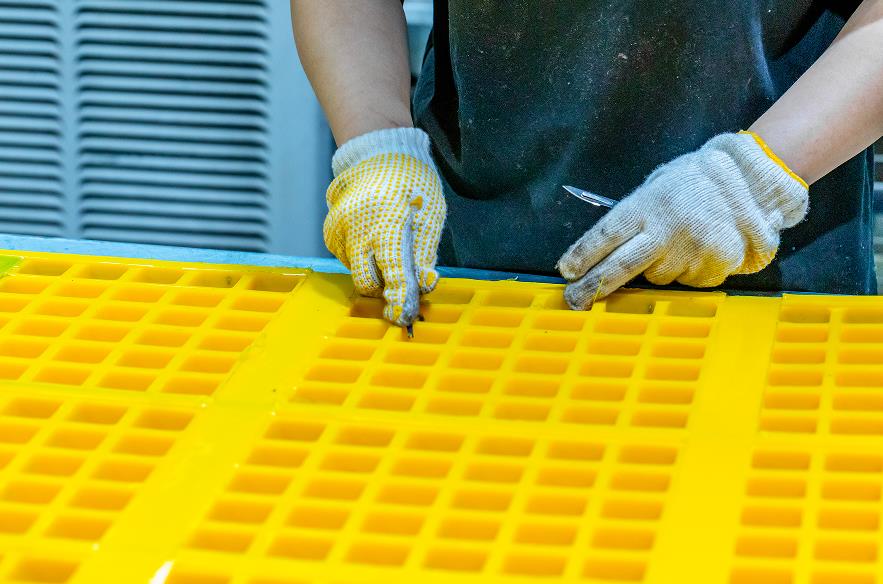Correct installation method of polyurethane screen plate
According to the structural form of polyurethane screen plate, it is divided into four types: inlaid type, bolt connection, pressure strip connection, and screen hook connection
According to the structural form of polyurethane screen plate, it is divided into four types: inlaid type, bolt connection, pressure strip connection, and screen hook connection.
For example, pressure strip connection type: please place the screen plate on the screen surface first, and then install it according to the support beam structure of the screen. Generally, screw holes should be drilled at appropriate intervals with U-shaped long iron plates of appropriate width on both sides of the screen machine and the upper layer of the screen plate along the feeding direction, and then tightened with bolts and the bottom support beam to fix the screen plate firmly in the middle. The contact surface between the support beam and the long iron plate and the screen plate is preferably padded with rubber strips (old rubber hoses can be used). The upper part of the support beam in the middle of the screen can also be installed in this way.

If the screen plate is not installed as required, it may shake up and down on the screen surface, and rub and collide with the steel support beam for a long time, which will seriously affect the service life of the screen plate.
1. Specifications:
(1). The standard type in the table is a common product with moderate screening efficiency and service life; the efficiency type has slightly higher efficiency and slightly lower service life; the service life type has slightly lower efficiency and higher service life.
(2). The sieve hole size in the table generally refers to square holes and polyurethane sieve plates. If you need rectangular holes of different sizes or other hole shapes, you can contact our company for production.
2. Product features:
(1). The vertical and horizontal bars of the screen are made of highly wear-resistant polyurethane material, and the bars contain steel wire. The service life is 3-10 times longer than that of traditional metal screens.
(2). The unique structure, suitable elasticity and plasticity can reduce blockage, and at the same time, due to the high-frequency vibration of the second harmonic of the screen bar, it can also reduce sticking. The practical opening rate is high and the screening efficiency is high.
(3). There are elastic tension hooks on both sides of the screen, which are light in overall weight, good in flexibility, easy to transport and store, and convenient to install and disassemble.
(4). The screen can effectively absorb impact, reduce noise and improve the working environment.
3. Product use:
Washing, screening, and grading of materials in metallurgy (iron ore, limestone, fluorite, cooling blast furnace slag, coke, and other raw materials), nonferrous metals, yellow metals, coal, chemicals, building materials, hydropower engineering, abrasive waste treatment, quarries, and other industries.
New structural sieve plates with various width specifications and sieve hole sizes are especially suitable for occasions with strong impact resistance, high hardness, and high wear resistance. Wear-resistant sieve plates are used for fine crushing and screening of iron ore, grading of raw coal, screening of gold, building materials, and sand and gravel in hydropower and nuclear power engineering.



